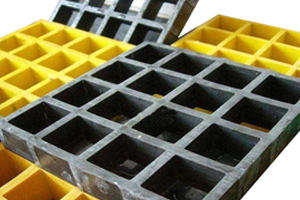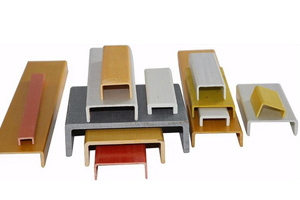Pipeline energization potential measurement
Pipeline energization potential measurement is a commonly used electrochemical measurement method, which measures the potential of each part of the pipeline by applying electric current in the pipeline, so as to judge the corrosion status and corrosion degree of the pipeline. This measurement method has the advantages of being non-destructive, fast and accurate, and is widely used in pipeline inspection and maintenance in petroleum, chemical, electric power and other industries.
The basic principle of pipeline energization potential measurement is the principle of electrochemical corrosion. When the current passes through the pipeline, the metal atoms on the surface of the pipeline will lose electrons to become positive ions, while the anions in the solution on the surface of the pipeline will accept these electrons to form a reduction reaction. This process results in the creation of an anodic and cathodic zone on the surface of the pipe, accompanied by the flow of electrons and the generation of an electric current. By measuring the potential change on the surface of the pipe, the corrosion state and degree of corrosion of the pipe can be determined.
(1) The energizing potential contains IR drop.
The cathodic protection power supply is turned on for 24h, the pipe ground potential measured along the line is the energization potential of the pipe, and the energization potential reading contains the voltage drop in the soil, i.e. IR drop. When the reference electrode is away from the pipe or close to the anode ground bed, the voltage reading contains a larger IR drop. Pipe ground potentials measured with the reference electrode placed on one side of the pipe are more negative than those measured with the reference electrode placed directly above the pipe. If the pipe has stray current discharge, the potential directly above the pipe will be even more negative. The energization potential is affected by many factors and can only be used to assess the working condition of the cathodic protection system, not to evaluate the effectiveness of cathodic protection.
(2) When the reference electrode is far away from the pipeline, the IR drop increases and the energization potential is more negative.
(3) The reference electrode is close to the anode ground bed, which is disturbed by the anode voltage field, and the energization potential is more negative. When the current flows out from the anode and enters the earth, the soil potential near the anode will be elevated relative to the apogee if the distant earth is the zero-potential surface. And near the cathode location, as the current flows from the distant soil into the cathode, the cathode location sinks in potential relative to the apogee. This corresponds to a conical voltage field at the anode position and a funnel-shaped voltage field at the cathode position. When the reference electrode is in the anode voltage field, the measured pipe ground potential is negative, while when the reference electrode is in the anode voltage field, the measured pipe ground potential is positive. For example, when the station area is protected, if the distributed anode is used, the distance between the reference electrode and the anode ground bed will directly affect the value of the energizing potential, and it is difficult to equalize the energizing potential. Another example is the protection of the outside of the tank floor, if the reference electrode is close to the anode belt or linear anode, the reference electrode will be in the anode voltage field, the potential will be elevated, and the potential reading will sometimes be close to the output voltage of the constant potential meter.
The specific steps for pipe energization potential measurements are as follows:
1. Preparation: Clean the surface of the pipeline to ensure that the surface is clean and free of foreign matter. Choose suitable electrodes as reference and auxiliary electrodes and connect the measuring instrument.
2. Apply current: By applying current to the pipe, the metal atoms on the surface of the pipe undergo a redox reaction, resulting in a potential difference.
3. Potential Measurement: The potential values are measured at different locations on the pipe surface and the data are recorded. Several measurements are taken and averaged in order to obtain more accurate results. 4.
4. Analysis of results: Based on the measured potential values, the corrosion status and degree of corrosion of the pipe is determined. Usually, if the potential value is abnormal, it means that there is corrosion in the area.
5. Follow-up treatment: According to the analysis results, the corroded parts are treated or repaired. If the corrosion is serious, it may be necessary to replace the pipe or take other effective anti-corrosion measures.
Advantages of pipe energization potential measurements include:
1. Non-destructive: this method will not cause damage to the pipeline and can be measured without stopping work.
2. Fast: the measurement time is short, can quickly determine the corrosion status and corrosion degree of the pipeline.
3. Accurate: by taking the average value of several measurements, more accurate measurement results can be obtained.
4. Widely applicable: applicable to pipelines of various materials, such as carbon steel, stainless steel, alloy steel and so on.
In practical application, pipeline energization potential measurement needs to pay attention to the following points:
1. Ensure the stability and uniformity of the current to avoid measurement errors.
2. Strictly control the influencing factors such as temperature, pressure and flow rate to ensure the accuracy of the measurement results.
3. pay attention to the selection and use of electrodes to ensure the quality and stability of electrodes.
4. before carrying out the measurement, should understand the pipeline material, structure, use conditions and other information, in order to better analyze and interpret the measurement results.
In conclusion, pipeline energization potential measurement is a practical pipeline inspection method, which can quickly and accurately determine the corrosion state and corrosion degree of the pipeline, and provide strong support for pipeline maintenance and management. With the continuous development and improvement of technology, this method will be applied and promoted in more fields.




